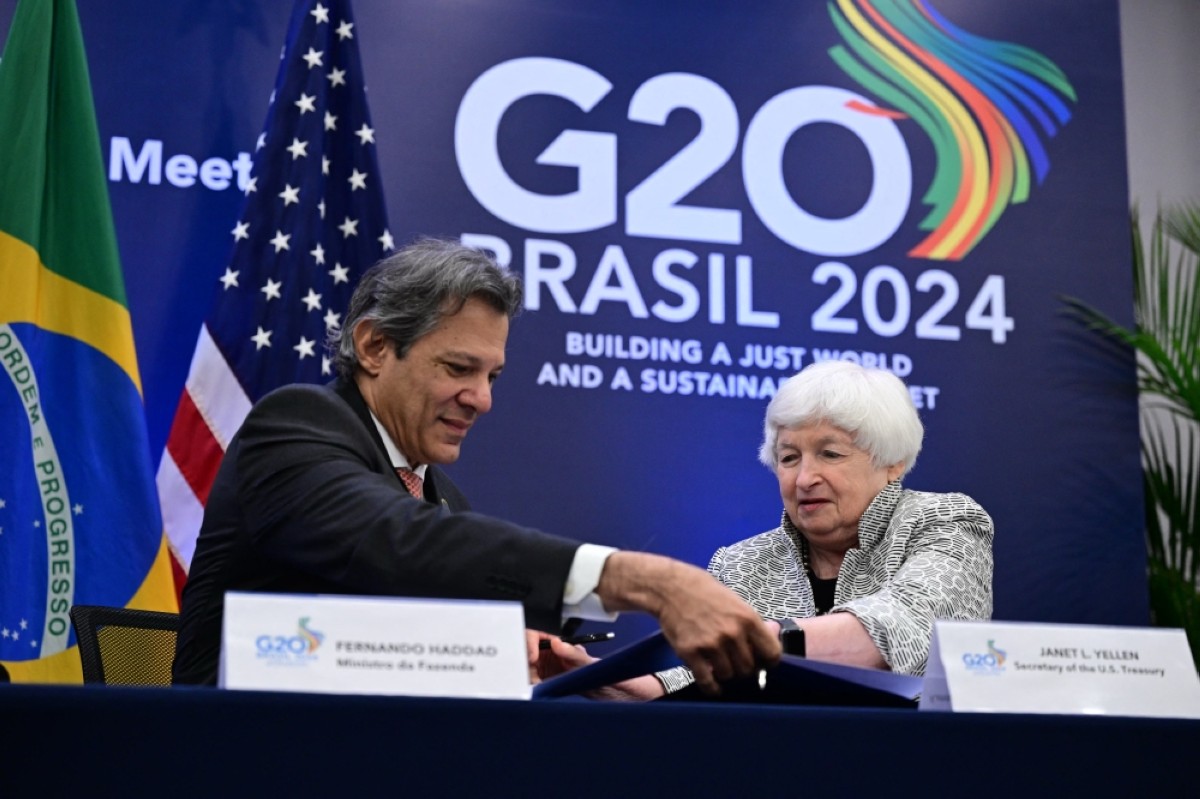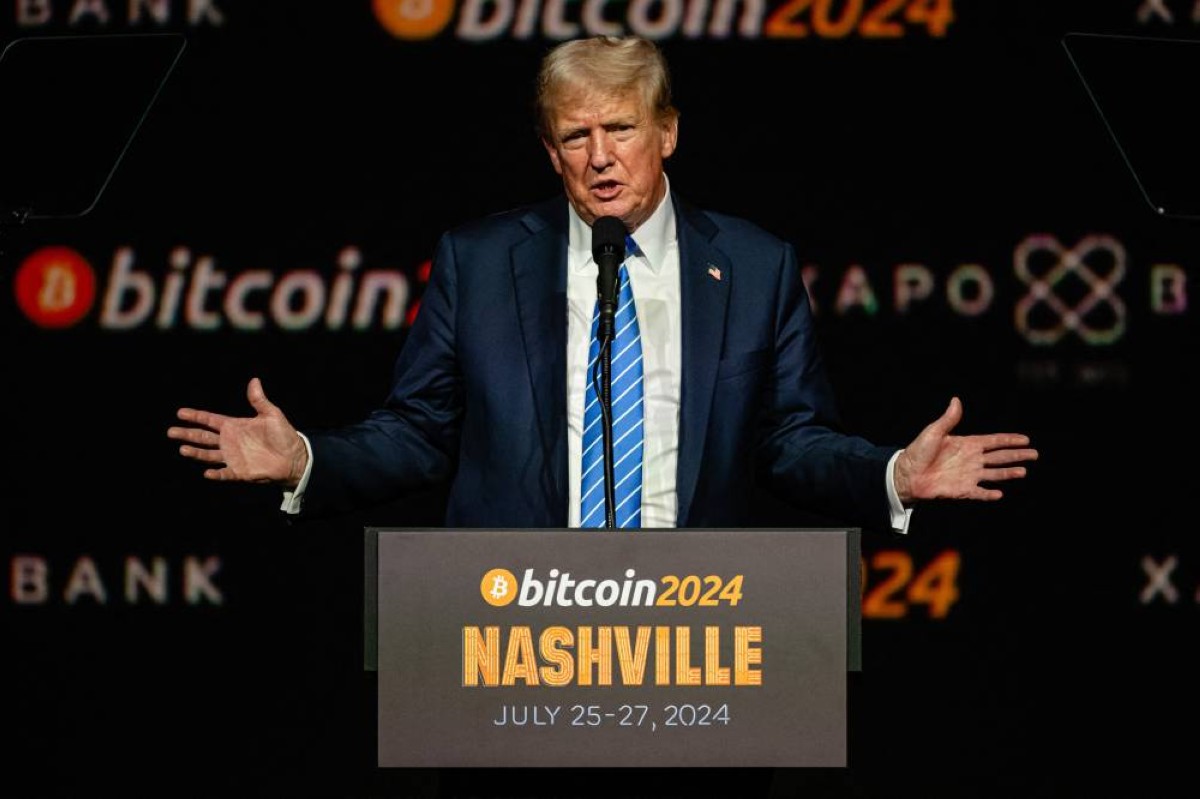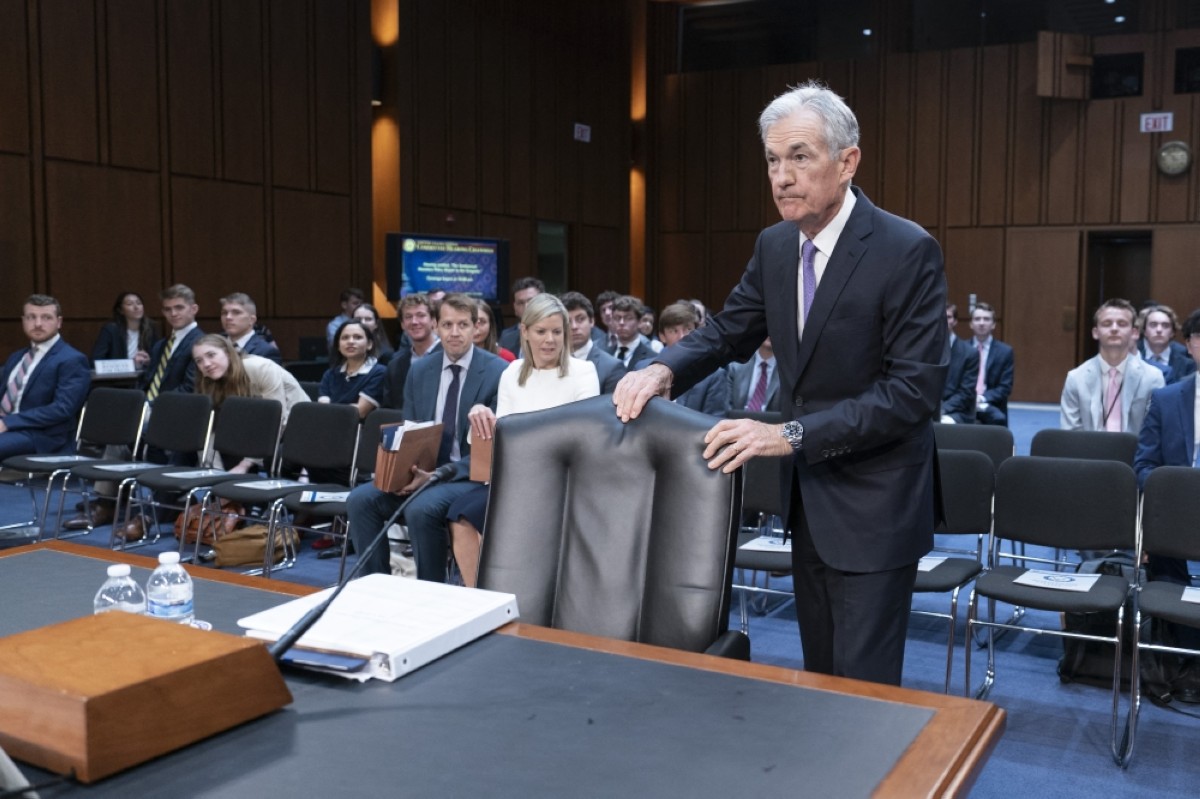Peruvian economy recovering after shocks, says IMF
WASHINGTON, DC: The Peruvian economy had a slight contraction in 2023 due to multiple consecutive shocks, while inflation decelerated rapidly.

Peruvian President Dina Boluarte, accompanied by her ministerial team, speaks during a press conference in Lima. -- AFP.
Economic growth declined to -0.6 percent in 2023, due to climate-related shocks and social turmoil. Inflation is converging towards the target thanks to the BCRP’s decisive monetary policy tightening, said the International Monetary Fund (IMF) in a statement. Strong supervision maintained financial stability.
The fiscal position remained strong, although the fiscal deficit (of the non-financial public sector) reached 2.8 percent of GDP (above the fiscal rule target of 2.4 percent of GDP), reflecting a shortfall in tax revenues due to the economic slowdown. Led by sizable import compression and better terms of trade, the current account registered a surplus of 0.6 percent of GDP. International reserves remain at a comfortable level of about 28 percent of GDP, the IMF issued the statement following its mission’s meeting with the Peruvian authorities and other counterparts during Feb 21 – March 7.
A rebound is expected in 2024 with growth converging towards its potential over the medium term. A strong recovery in agriculture and fishing after El Nino ends, ongoing momentum in mining, and a looser monetary policy (consistent with lower inflation) are expected to support a growth revival. However, only a modest recovery in private consumption and investment is expected, as political uncertainty continues to hamper consumer and business confidence. Real GDP is projected to grow by around 2.5 percent in 2024 with a negative output gap closing gradually until 2026. The current account is envisaged to return to a low deficit in 2024 as growth normalizes and to stabilize at about -1.5 percent of GDP in the medium term, the statement said.
Inflation is expected to decrease towards the middle of the target band, aided by the normalization of supply shocks and a negative output gap, while the BCRP continues with its easing cycle to bring the policy rate to a neutral level.
Evolving risks are broadly balanced, and Peru has ample buffers to cope with shocks. Key domestic risks include an intensification of political uncertainty, social unrest, and climate-related shocks. Key external risks comprise weak trading-partner growth, commodity price volatility, and a sharp tightening of global financial conditions. On the upside, a decisive resurgence in confidence, catalyzed by large infrastructure and mining projects, could strengthen private consumption and investment. Peru’s proven macroeconomic resilience is reinforced by very strong buffers including low public debt, abundant international reserves, access to international capital markets on favorable terms, and access to the Flexible Credit Line (FCL).
The BCRP’s data-driven monetary policy easing remains appropriate. With inflation entering the target band and anchored inflation expectations, additional data-dependent monetary policy easing is warranted. With the interest rate differential against the US expected to narrow, the BCRP should continue to allow exchange rate flexibility.
The authorities could use targeted macroprudential measures to facilitate de-dollarization. Credit dollarization has fallen from around 49 percent in mid-2013 to 22 percent in 2022, but the trend has stalled. The authorities could consider foreign exchange targeted macroprudential measures and removing hurdles to the development of capital markets to reduce unhedged positions, the statement added. - AFP.











